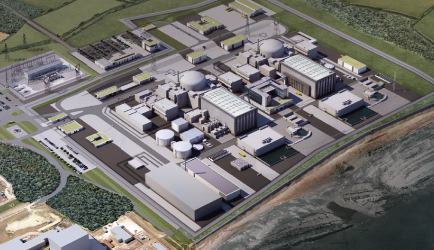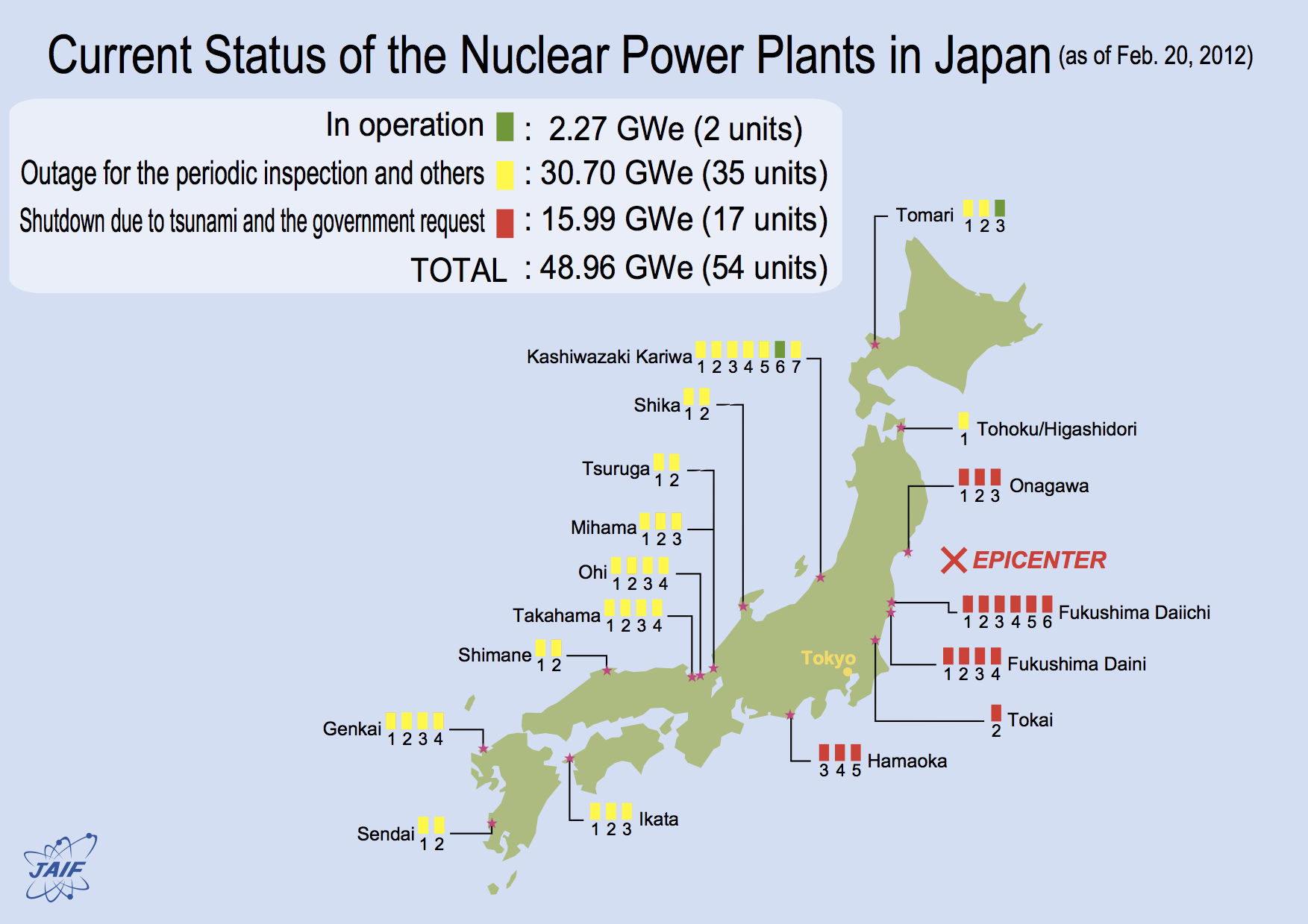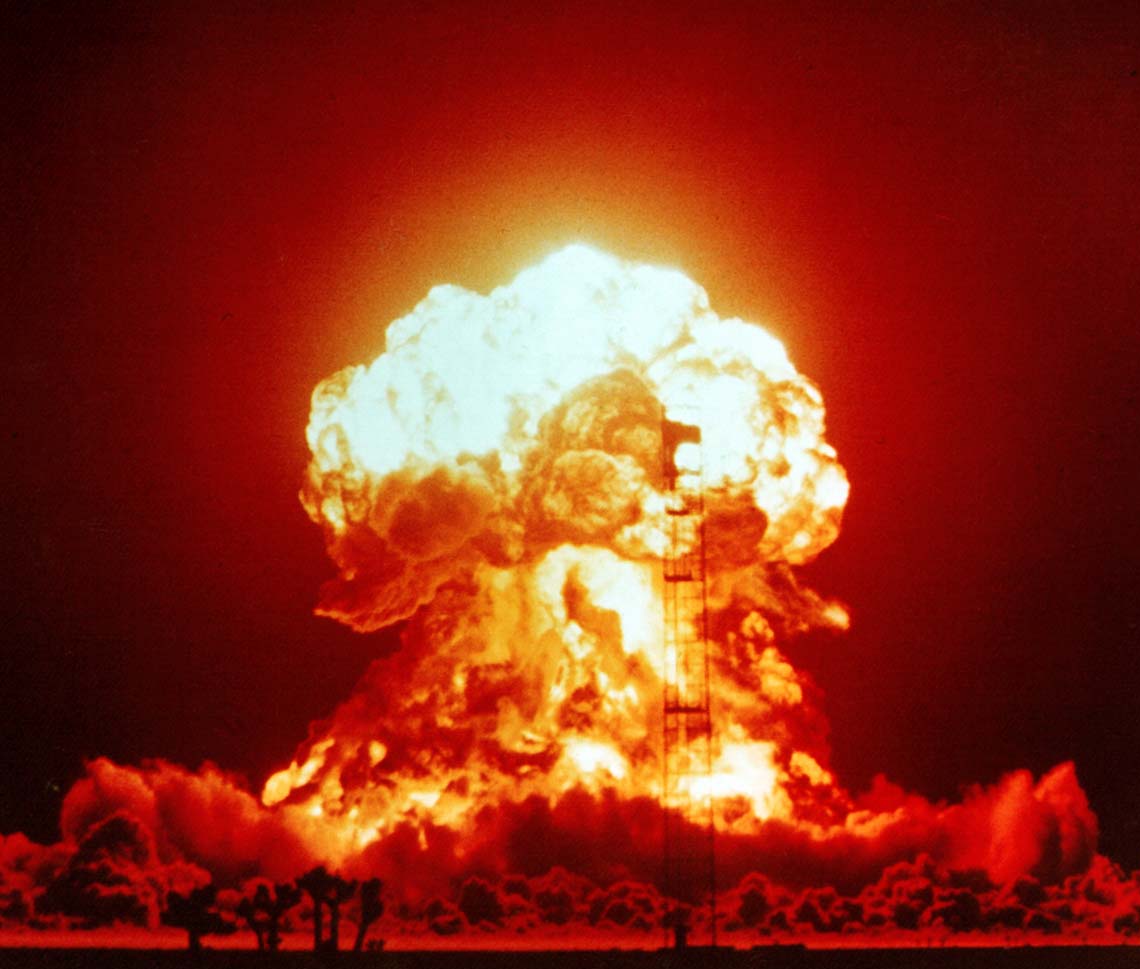
Blog
-
Geiger Readings for Sep 05, 2015
Ambient office = 69 nanosieverts per hourAmbient outside = 106 nanosieverts per hourSoil exposed to rain water = 126 nanosieverts per hourMango from Central Market = 99 nanosieverts per hourTap water = 100 nanosieverts per hourFiltered water = 91 nanosieverts per hourSalmon – Caught in USA = 148 nanosieverts per hour -
Nuclear Reactors 281 – EDF Announces Delay in Hinkley Point C Reactor Project in U.K.
I recently posted articles about the Hinkley Point C nuclear project in the U.K. It is a very complex and confusion situation with respect to technology, politics, costs, investors, environment, labor and other issues. I am returning to the Hinkley Point C project for today’s post because of some breaking news.
EDF, the French state-owned utility, has announced that the project will be delayed. The two new reactors to be built at the Hinkley Point Power Station were supposed to be operational in 2023. Now EDF says that the two new reactors will not start generating power in 2023. The schedule has been pushed back four times already because of concerns over the safety of the design of the new European Pressurized Reactors (ERP). The ERPs will not be ready for construction until 2018 said EDF. They say that they will announce a new timetable for the new reactors once they have finalized investment plans.
EDF has had problems finding enough investors to back the Hinkley Point C project. They have also had problems because of challenges by Austria over U.K. state support of the project and questions about investment from outside the European Union. been counting on the Chinese government to invest in the Hinkley Point C project. Areva, the company that is slated to build the new U.K. reactors, has been unable to provide the small percentage of the cost it agreed to for the project because of major problems with the construction of some reactors in France. The U.K. government is pressing potential investors to make a decision on Hinkley Point as quickly as possible in the light of potential blackouts in the U.K. if new sources of power are not brought online in the near future.
The Organization for Economic Co-operation and Development (OECD) has stated that the projected costs for nuclear power in the U.K. is the highest in the world. They say that the cost of a nuclear plant located in Britain is estimated to be almost three times the cost of a similar plant built in China or South Korea. While it can be difficult to compare costs of nuclear power projects in different countries, it is obvious that the U.K. cost will be much higher than the cost in China. One reason is the fact that China is planning on building dozens of new nuclear reactors in the near future and this will allow economies of scale to come into play for components. In addition, the nuclear plants in China will be built by state-owned enterprises which gives the builders access to loans at low or even zero interest rates.
It has been suggested by some in the U.K. that the U.K. government should “take back” the nuclear industry by renationalization of the twelve new nuclear power plants that are being planned. The construction and operation could be outsourced to private companies.
As I have stated before, the Hinkley Point C project may never become operational. I predict that it will eventually be abandoned after billions of dollars have been spent.
Hinkley Point C artist’s concept:
-
Radiation News Roundup Sep 04, 2015
Although the co-owners of Sweden’s Ringhals nuclear power plant -Vattenfall and EOn – have yet to agree on the early closure of units 1 and 2, majority owner Vattenfall has said it will limit investment in those units which will mean they can only operate until 2020. world-nuclear-news.org
The Czech Republic’s counter-intelligence agency says the number of Russian spies remains high and they are particularly interested in the country’s nuclear program. foxnews.com
-
Geiger Readings for Sep 04, 2015
Ambient office = 119 nanosieverts per hourAmbient outside = 123 nanosieverts per hourSoil exposed to rain water = 89 nanosieverts per hourYellow bell pepper from Central Market = 167 nanosieverts per hourTap water = 112 nanosieverts per hourFiltered water = 94 nanosieverts per hour -
Nuclear Reactors 280 – Current Status of Japanese Nuclear Power Reactors
Japan turned off all forty eight of its nuclear reactors after the Fukushima disaster in March 2011. These reactors generated thirty percent of Japan’s power. Since then there have been investigations and studies to understand why the disaster happened and how to prevent such an event from happening in the future. All the existing nuclear power plants in Japan have been studied with respect to risk. The Abe government is still dedicated to making nuclear technology the centerpiece of Japan’s expansion of foreign trade. They also believe that nuclear power is the solution to Japan’s energy needs.
There are currently forty two operable nuclear reactors in Japan. Nine of these will probably never be turned back on due to their inability to meet the new safety standards. Even if the utilities that own reactors make modifications to meet the new standards, there is apparently no guarantee that they will be permitted to restart. There is confusion and conflict between the Japanese courts and regulatory agencies. Two reactors that had been clear for restart by the Japan Nuclear Authority have been blocked by courts from restarting. The first of these to be turned back on is at Sendai.
Here is the list of the reactors in Japan and notes on their potential return to commercial operations. (Source is the Nuclear Street website.)
“Sendai 1 is restarted; Sendai 2 is likely to receive NRA approval this year.
Ikata 3 in Shikoku: Likely to be approved by regulators. It is viewed as having local support for a restart.
Genkai 3 and 4 in Kyushu: Moving forward with applications for restart. Has some local support.
Tomari 1, 2 and 3 in Hokkaido: Moving forward with applications.
Shiame 2 in Chugoku: odds for restart uncertain; local government is investigating fuel documentation issues.
Takahama 3 and 4, Kansai: Restart viewed as uncertain; utility is appealing court injunction preventing restart.
Ohi 1 through 4, Kansai: Considerable uncertainty due to legal risks Has submitted application for restarts, but courts have interceded. Company appealing court’s directive.
Higashidori 1, Tohoku: Application for restart submitted, but the outcome is uncertain due to the proximity to a tectonic fault line.
Kashiwazaki 6 and 7, Tokyo: Odds for restart uncertain due to strong opposition in local government.
Onegawa 1 and 2, Tohoku: No application for restart on Unit 1, fate of Unit 2 unclear – it was damaged during the Great East Japan Earthquake of March 2011.
Tokai Daini, Japco: Approval for restart uncertain due to age of plant.
Takahama 1 and 2, Kansai: Also uncertain due to age of Unit 1 and strident regulatory response to Unit 2.
Hamaoka 3, 4 and 5, Chubu: Has applied for restart of Unit 3, but outcome is uncertain. Facility is close to a major tectonic fault line. Unit 5 suffered sever flooding of saltwater during March 2011 events.
Shika 2, Hokuriku: Hurdles for restart include local fault lines and local opposition.
Kashiwazaki 1 – 5, Tokyo: Unit 3 not approved for restart. Legal challenges beset restarts of other units. Unit 4 damaged by July 2007 earthquake event.
Mihama 3, Hokuriku: Close to decommissioning age.
Genkai 2, Kyushu: Upgrades viewed as too costly for restart attempt.
Ikata 1 and 2, Shikoku: Up against age limitations and cost issues.
Shika 1, Hokuriku: Has local opposition and sits close to a problematic fault line.
Tsuruga 3, Japco: Has local opposition and sits close to a problematic fault line.
Fukushima Plants – Daiichi and Daini, Tokyo: Very unlikely due to severe damage and very strong local opposition.”
Attempts to reform the Japanese nuclear industry have failed in the past. If major changes are not made to the way nuclear power is regulated in Japan, the odds of another major nuclear accident are great. If and when such an accident occurs, it will be much harder if not impossible to turn the Japanese nuclear power reactors back on after they are shut down.
-
Radiation News Roundup Sep 03, 2015
Kazakhstan and China have agreed to the procurement of temporary storage services of natural uranium concentrates in China and transit through China to the western ports of the USA and Canada. world-nuclear-news.org
Saudi Arabia and South Korea yesterday signed contracts to support their cooperation in developing SMART reactors. world-nuclear-news.org
-
Geiger Readings for Sep 03, 2015
Ambient office = 102 nanosieverts per hourAmbient outside = 85 nanosieverts per hourSoil exposed to rain water = 100 nanosieverts per hourCalifornia avacado from Central Market = 105 nanosieverts per hourTap water = 137 nanosieverts per hourFiltered water = 123 nanosieverts per hour -
Nuclear Weapons 155 – The Ongoing Threat of Nuclear Weapons – Part 2 of 2 parts
Part 2 of 2 Parts (Please read Part 1 first)
There is also the possibility of a non-state terrorist organization obtaining a nuclear device and using it against a state, nuclear or otherwise. It is possible that some nuclear warheads may have gone missing when the Soviet Union fell apart in 1991. There are nuclear states such as Pakistan and North Korea which have a history of shading dealings in nuclear materials and technologies which might sell a warhead to a terrorist group. The detonation of a single nuclear device by terrorists in a major city could cause the death of millions and destabilize the global economic and political system. There have been projections that a small nuclear device exploded fifty miles above the center of the U.S. could effectively destroy the U.S. with the resulting electromagnetic pulse which would fry the continental power grid. The collapse of the U.S. would lead to the collapse of the world economic system and the possible death of billions.
And, finally, with the aging of the nuclear arsenals of the U.S. and Russia as well as the acquisition of nuclear weapons by smaller and less stable countries, there is always the danger that a nuclear warhead will be detonated accidentally. Nuclear weapons systems are designed with technology and procedures to prevent this but no human build system is perfect. There have been close calls in the past where a nuclear weapon could have been accidentally set off.
There are a number of existential threats facing the human race including climate change, asteroid impacts, massive solar flares, plagues, collapse of major infrastructure, overpopulation leading to starvation, etc. While the threat of nuclear detonations in populated areas has decreased since the end of the Cold War, it is certainly not gone by any means. The U.S. and Russia are both upgrading their nuclear arsenals. Non-nuclear states are working to obtain nuclear weapons. There are international tensions that could boil over into military conflicts that could result in nuclear detonations. The fact that no one can win a nuclear war will not necessarily stop someone from starting one.
re is a global movement to get rid of all nuclear weapons. The human race has cringed under the nuclear threat for far too long. Pressure must be brought to bear on politicians who believe that the possession of nuclear weapons makes their nation more secure. If it was ever the case, it is certainly not the case now. We were fortunate indeed that nuclear war never broke out between the U.S. and Soviet Union but, with more and more nuclear nations and deteriorating global stability, our luck may run out.
There is a close connection between nuclear power and nuclear weapons. Nuclear power was originally pushed on the citizens of the U.S., the Soviet Union, China and other nuclear states with the promise that it would be cheap and safe. The real reason for peaceful nuclear power projects was to support the nuclear weapons programs. The same enrichment process that creates fuel for nuclear reactors can be used to enrich uranium for nuclear weapons. The nuclear waste produced by nuclear reactors can be processed to extract plutonium for nuclear weapons. It is now obvious, after decades of use, that nuclear power is neither cheap nor safe. It would be best if the human race, in addition to destroying all nuclear warhead, also shut down all nuclear power plants and shifted to other sources of low-carbon renewable energy.
-
Radiation News Roundup Sep 02, 2015
More Fukushima Deaths: ‘Leukemia-linked Disorder’ Killing Baby Seals Along California Coast. thedailysheeple.com
Obama secures Iran nuclear deal with Barbara Mikulski vote. cnn.com
The first safety concrete has been poured for the basemat of the containment building of the fourth reactor at the United Arab Emirates’ Barakah nuclear power plant, marking the official start of the unit’s construction. world-nuclear-news.org
The International Atomic Energy Agency, the United Nations’ nuclear power watchdog, said that Kenya had made the appropriate “consideration” regarding its infrastructure needs to move forward with development of a nuclear power program. nuclearstreet.com
-
Geiger Readings for Sep 02, 2015
Ambient office = 118 nanosieverts per hourAmbient outside = 58 nanosieverts per hourSoil exposed to rain water = 58 nanosieverts per hourMexican avacado from Central Market = 102 nanosieverts per hourTap water = 93 nanosieverts per hourFiltered water = 81 nanosieverts per hour






